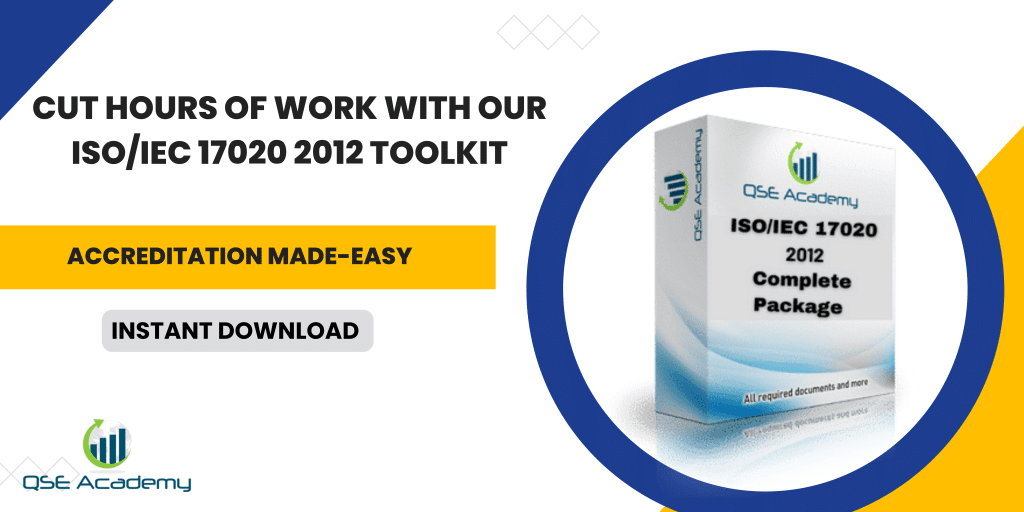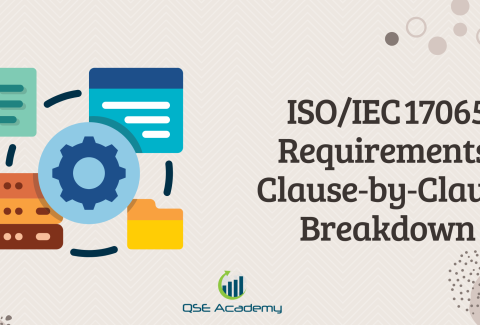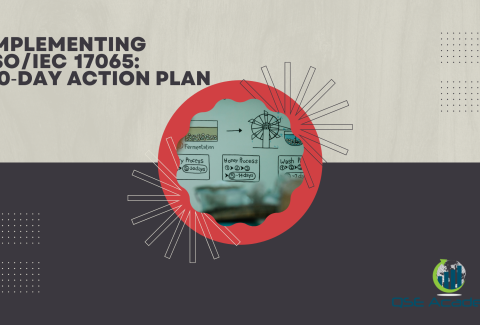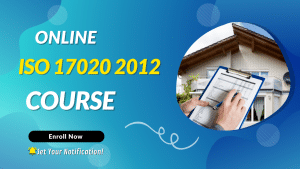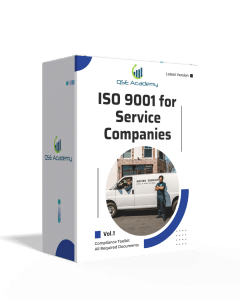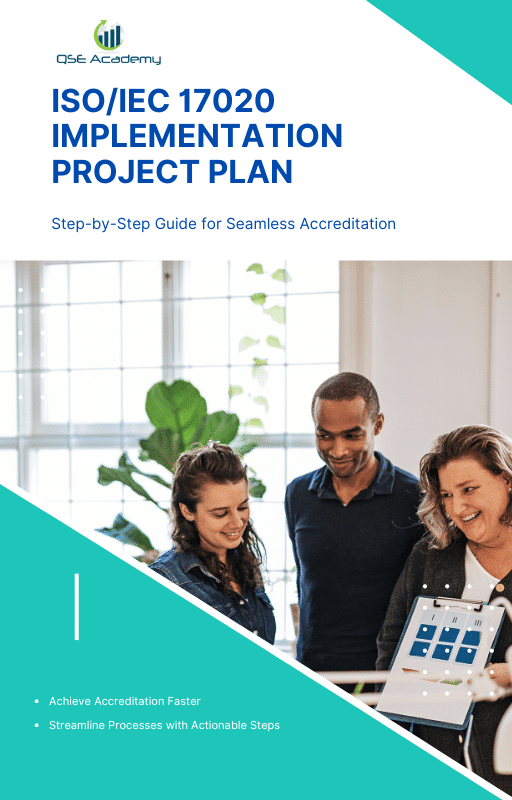ISO/IEC 17020 Project‑Plan Template
Last Updated on October 22, 2025 by Hafsa J.
Why Every Inspection Body Needs an ISO/IEC 17020 Project Plan
If you’ve ever tried implementing ISO/IEC 17020 without a clear plan, you probably know how fast things can spiral.
One week everyone’s enthusiastic—new templates, meetings, tasks—and the next, half the team isn’t sure who’s responsible for what.
I’ve seen this story play out many times. Great teams lose momentum not because they lack expertise, but because they lack structure. That’s why an ISO/IEC 17020 project-plan template is a game-changer. It gives you clarity, accountability, and measurable progress.
This guide walks you through:
-
The key phases of an ISO/IEC 17020 project, from setup to accreditation.
-
How to assign roles, set realistic timelines, and track your progress.
-
Common pitfalls to avoid and pro tips to keep your project moving smoothly.
By the end, you’ll know exactly how to organize your implementation—without the stress or confusion that often comes with compliance projects.
Understanding the ISO/IEC 17020 Project Lifecycle – Four Phases That Keep You on Track
Every inspection body’s journey toward ISO/IEC 17020 accreditation follows a rhythm. Once you recognize that rhythm, the process feels far less overwhelming.
In my experience, successful projects move through four main phases — each building on the last.
1. Preparation
This is your foundation.
Define your inspection scope, objectives, and who’s on your implementation team. It’s also the stage where you identify any existing documentation you can adapt instead of starting from scratch.
2. Implementation
This is where your procedures, policies, and forms take shape. You align everything with ISO 17020 clauses—competence, impartiality, confidentiality, and operational control.
Pro Tip: Don’t wait until the end to involve your technical team. Their early input prevents rewrites later.
3. Internal Audit & Management Review
This phase verifies your readiness. Internal audits reveal gaps before the external assessors do.
Common Pitfall: Treating this step as a formality. It’s not. An honest internal audit is your last line of defense before applying for accreditation.
4. Accreditation
Now you compile your documentation, evidence, and application package for your chosen accreditation body. Expect follow-up questions or clarifications—it’s part of the process.
Pro Tip: Anticipate at least one feedback cycle from assessors. Planning for it keeps your timeline realistic.
When these four phases are clearly mapped, your project stops feeling like a guessing game. Everyone knows what’s next, and progress becomes predictable.
Step-by-Step Breakdown of the ISO/IEC 17020 Project-Plan Template
Now that you’ve got the big picture, let’s turn it into something practical — your actual project plan.
A strong ISO/IEC 17020 project plan doesn’t need complex software or dozens of tabs. What matters is clarity. Everyone should be able to open it and instantly see:
-
What needs to be done
-
Who’s responsible
-
When it’s due
-
How far along it is
Here’s a simple layout I often recommend to clients starting their accreditation journey:
| Phase | Objective | Deliverables | Owner | Due Date | Status |
|---|---|---|---|---|---|
| Planning | Define scope and roles | Project Charter | Quality Manager | Week 1 | ✅ Done |
| Documentation | Develop core procedures | Document Control, Impartiality, Competence Procedures | Technical Manager | Week 4 | 🕓 In Progress |
| Internal Audit | Assess readiness | Internal Audit Report, Corrective Actions | Auditor | Week 6 | ⏳ Pending |
| Accreditation | Apply for accreditation | Application Package, Evidence List | Project Manager | Week 9 | 🔜 Next Step |
This format works in Excel, Google Sheets, or even project-management tools like Trello or Asana. The goal is simple: visibility.
Pro Tip: Schedule a 15-minute weekly check-in to review progress. You’ll catch small delays before they become big problems.
Pitfall to avoid: Treating your plan as a static file. It should evolve with your project — update it every week.
When your team sees tasks moving from “pending” to “done,” morale goes up and accountability strengthens. Small visual wins add up fast.
Assigning Roles and Responsibilities – Building a Team That Works Together
Here’s what I’ve noticed after working with many inspection bodies: ISO projects don’t collapse because of lack of knowledge—they collapse because no one’s sure who owns what.
When tasks aren’t clearly assigned, deadlines slip, and meetings turn into guessing games. That’s why defining roles early isn’t optional—it’s essential.
Start by outlining your core project roles:
-
Project Manager: Oversees timelines, tracks deliverables, and keeps everyone accountable.
-
Quality Manager: Leads documentation, ensures procedures align with ISO/IEC 17020 clauses, and manages records.
-
Technical Manager: Reviews technical controls, ensures competence requirements are met, and approves inspection methods.
-
Inspectors or Staff Members: Implement daily operational procedures and provide real-world feedback.
Once those roles are set, use a RACI Matrix (Responsible, Accountable, Consulted, Informed). It’s a simple but powerful way to eliminate confusion.
Here’s a sample:
| Task | Responsible | Accountable | Consulted | Informed |
|---|---|---|---|---|
| Develop Quality Manual | Quality Manager | Project Manager | Technical Manager | All Staff |
| Conduct Internal Audit | Internal Auditor | Quality Manager | Technical Manager | Top Management |
| Submit Application | Project Manager | Managing Director | Quality Manager, Technical Manager | All Staff |
Pro Tip: Bring your inspectors into early discussions about procedures. They see operational realities that managers sometimes miss.
Common Pitfall: Letting only one person (usually the quality manager) handle everything. ISO/IEC 17020 requires team ownership. Accreditation bodies want to see that technical and quality functions are both involved.
When everyone knows their part, you’ll notice smoother communication, faster document approvals, and fewer misunderstandings. It’s the kind of clarity that makes an ISO project actually enjoyable to manage.
Setting Timelines & Milestones – Keeping Your Project on Schedule
A well-timed project plan is like a steady heartbeat — it keeps your team alive and moving at the right pace.
Too fast, and people burn out. Too slow, and momentum disappears. The goal is to find that balance where progress feels natural and sustainable.
Here’s a timeline structure that works for most inspection bodies:
| Phase | Estimated Duration | Key Activities |
|---|---|---|
| Planning | 2–3 weeks | Define scope, assign roles, and gather existing documentation. |
| Implementation | 4–6 weeks | Develop procedures, train staff, and start using the system. |
| Internal Audit & Review | 2 weeks | Conduct internal audit, close findings, hold management review. |
| Accreditation Submission | 2–3 weeks | Prepare application, gather evidence, and submit to the accreditation body. |
Pro Tip: Add a small buffer — about 10–15% extra time — to every phase. It gives you breathing room for revisions, clarifications, or unexpected issues.
What I’ve seen go wrong: Teams often underestimate review times. A single document that needs multiple signatures or technical checks can add a week or more. If you don’t plan for that, your entire schedule starts slipping.
Another smart move: Create visible milestones. For example:
-
“All core procedures approved”
-
“Internal audit completed”
-
“Accreditation package submitted”
These checkpoints keep everyone aligned and make progress tangible.
When your project runs on a defined timeline with visible milestones, the team stays motivated. You can measure success every week — not just at the end.
Monitoring Progress & Managing Risks – Keeping Control
Once your plan is in motion, the challenge shifts from starting to staying on track.
This is where many teams struggle — not because they stop working, but because they stop tracking.
Monitoring progress isn’t about micromanaging; it’s about keeping visibility. You can’t fix what you don’t measure.
Here’s what I recommend tracking weekly:
-
% of tasks completed (based on your plan).
-
Number of procedures reviewed and approved.
-
Outstanding corrective actions from internal audits.
-
Training completion rate for staff involved in inspections.
It doesn’t need to be complicated. A simple Excel sheet, dashboard, or even a shared Google Doc can do the job.
Pro Tip: Review these metrics in short, focused weekly meetings. Fifteen minutes is enough to spot red flags and keep accountability high.
Now, let’s talk about risk — because every project has it.
Here’s what to include in your risk register:
| Risk | Impact | Likelihood | Mitigation |
|---|---|---|---|
| Delayed document approvals | High | Medium | Assign clear review deadlines |
| Staff turnover | High | Low | Cross-train key roles |
| Misinterpretation of ISO requirements | Medium | Medium | Consult with an ISO 17020 expert early |
What I’ve seen work best: Teams that discuss risks openly stay ahead of problems. Pretending everything’s fine until the audit only makes recovery harder.
Monitoring and risk management aren’t the “boring” parts of a project — they’re the reason some inspection bodies finish on time while others never get accredited.
Final Review & Handover – Getting Audit-Ready
This is the phase where everything you’ve built comes together.
By now, your procedures are written, your records are filling up, and your internal audits are complete. But before you hit “submit” on your accreditation application, there’s one final step — a thorough review.
Here’s how to do it right:
1. Review All Documentation
Check that every document:
-
Has the correct version number, date, and approval signature.
-
Is consistent across procedures (no conflicting references or outdated forms).
-
Reflects the actual process your team is following — not an idealized one.
Pro Tip: Use a “document readiness checklist.” It’s amazing how many accreditation delays happen because a footer or version log was missed.
2. Close All Internal Audit Findings
Every non-conformity, however small, should be verified as closed. Accreditation bodies love evidence of action — not promises.
3. Conduct a Full Management Review
This is where leadership confirms that resources, competence, and impartiality controls are all in place. Keep clear minutes with decisions and follow-up actions.
4. Prepare and Submit Your Application
Double-check the requirements of your chosen accreditation body. Some want digital submissions; others require printed binders or both.
Bundle your evidence neatly — quality manual, procedures, training records, audit reports, and review minutes.
Common Pitfall: Submitting before you’re truly ready. It’s better to delay a week than to rush and face a long list of non-conformities later.
Pro Tip: If possible, schedule a mock assessment two weeks before your real one. A fresh pair of eyes — someone not involved in the project — will spot things your team overlooks.
Once your package is in, celebrate that milestone. You’ve moved from “building a system” to proving its effectiveness — and that’s a big win.
FAQs – Common Questions About ISO/IEC 17020 Project Plans
Q1: How long does a typical ISO/IEC 17020 project take?
From my experience, small to medium inspection bodies usually complete the implementation and preparation in 8 to 12 weeks.
Larger organizations or those starting completely from scratch might need up to 16 weeks.
It depends on three things: your documentation readiness, team availability, and how quickly decisions get approved.
Pro Tip: If you already have an ISO 9001 system in place, you can often shorten your ISO 17020 project by 30–40%.
Q2: Can one project plan work for multiple inspection scopes?
Yes — but with adjustments.
Your main structure (phases, milestones, roles) stays the same, but tasks under technical competence, inspection procedures, and training must be tailored for each scope.
For example, electrical inspections require different technical criteria and risk controls than construction inspections.
Think of your plan as a framework, not a one-size-fits-all template.
Q3: What’s the best tool for managing an ISO/IEC 17020 project plan?
You don’t need fancy software to stay organized — but you do need visibility.
Many teams start with Excel or Google Sheets and later move to specialized tools like QSE Academy’s ISO 17020 Software, which automates task tracking, document management, and reminders.
If you prefer something visual, tools like Trello or Notion can also work well — as long as your team updates it consistently.
Bonus Tip: No matter what tool you use, appoint one person to maintain version control of your plan. Multiple edits without coordination can lead to confusion fast.
Turning Structure Into Success
A well-built ISO/IEC 17020 project plan doesn’t just keep you organized — it keeps you confident.
Instead of wondering what’s next, your team knows exactly where they’re headed, who’s responsible, and how close they are to accreditation.
In my experience, that clarity changes everything.
It removes guesswork, reduces stress, and turns ISO implementation from a headache into a structured, measurable process.
When your plan defines clear roles, realistic timelines, and progress tracking, you’re not just checking boxes — you’re proving competence. And that’s what ISO/IEC 17020 is really about: showing that your inspection body operates with control, consistency, and integrity.
So take this framework, adapt it to your organization, and start mapping your path today.
Even small, steady progress compounds quickly when you follow a clear plan.
Next Step:
Download the ISO/IEC 17020 Project-Plan Template or book a consultation with QSE Academy to customize your implementation roadmap and get expert support through your accreditation journey.
Because once your project plan is solid, everything else — from documentation to audits — starts falling into place.
I hold a Master’s degree in Quality Management, and I’ve built my career specializing in the ISO/IEC 17000 series standards, including ISO/IEC 17025, ISO 15189, ISO/IEC 17020, and ISO/IEC 17065. My background includes hands-on experience in accreditation preparation, documentation development, and internal auditing for laboratories and certification bodies. I’ve worked closely with teams in testing, calibration, inspection, and medical laboratories, helping them achieve and maintain compliance with international accreditation requirements. I’ve also received professional training in internal audits for ISO/IEC 17025 and ISO 15189, with practical involvement in managing nonconformities, improving quality systems, and aligning operations with standard requirements. At QSE Academy, I contribute technical content that turns complex accreditation standards into practical, step-by-step guidance for labs and assessors around the world. I’m passionate about supporting quality-driven organizations and making the path to accreditation clear, structured, and achievable.


